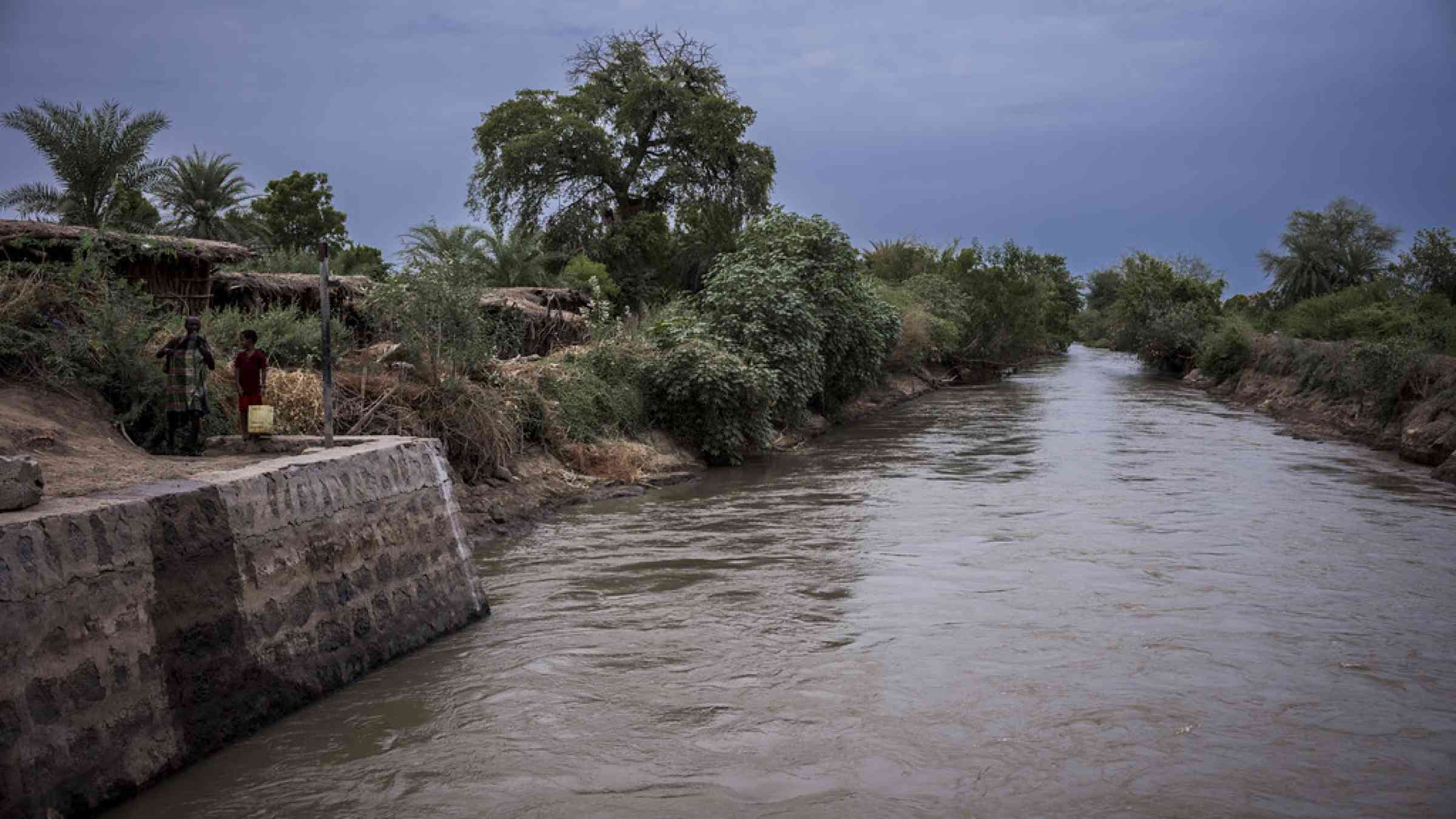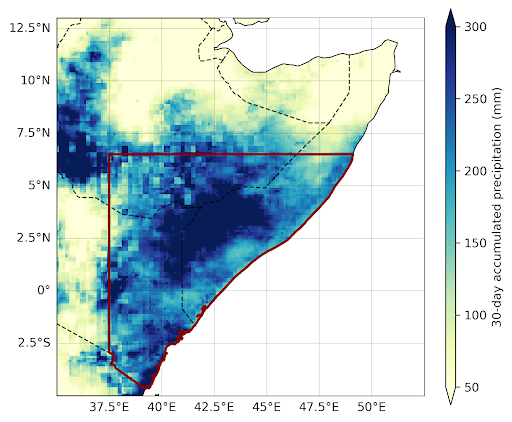Compounding natural hazards and high vulnerability led to severe impacts from Horn of Africa flooding exacerbated by climate change and Indian Ocean Dipole

After years of drought the short rainy season (October to December, OND) in the Horn of Africa brought exceptionally heavy rains, particularly in November, leading to severe flooding in the South of Ethiopia, Eastern Kenya and many regions in southern and central Somalia.
Weather stations reported between 200 and 500 mm more rain than usual this year, more than a month before the end of the rainy season.
The ongoing floods are hitting vulnerable communities that were already suffering from loss of livelihoods, malnutrition and hunger due to livestock deaths and crop failure in the context of the drought that only ended with the ongoing heavy rains. The floods led to more than 300 reported deaths so far and displaced over a million people in Kenya and Somalia alone.
Researchers from Kenya, Ethiopia, South Africa, the United States of America, the Netherlands, Germany and the United Kingdom collaborated to assess to what extent human-induced climate change altered the likelihood and intensity of the heavy rainfall.
Across the region several individual heavy rainfall events of varying length led to flash flooding as well as several rivers bursting their banks. To capture this range of flood-inducing rainfall processes, we analysed different lengths of cumulative rainfall. However the results are very similar independent of whether investigating a few days or a whole month. Thus we choose maximum 30-day mean rainfall over OND as the event definition. The study region is outlined in black in Fig. 1, and has a fairly homogenous climate with a distinct long (March to May) and short rainy season (OND), characterised by arid and semi-arid climate.

Main findings
- Historical drought and recent flooding compounded exposure and vulnerability of populations and population sub groups to severity of flood-related impacts
- From the end of October throughout the rainy season up till now rainfall over the region was very heavy, leading to exceptional amounts of precipitation accumulated on several timescales from 1-day to 30-day, with 2023 showing either highest or second highest events on record.
- The OND rainy season is known to be influenced by modes of natural variability, including the El Nino Southern Oscillation (ENSO) and the Indian Ocean Dipole (IOD) as the dominant modes of variability. Both ENSO and IOD are in a positive phase which has been shown to increase the likelihood of heavy rainfall in the wider Horn of Africa OND season.
- For the region analysed in this study we find no significant role of ENSO but a significant influence of the IOD. In the current IOD phase and under the current climate conditions, an event of this magnitude is expected to happen more often than under IOD neutral conditions, with a return period of approximately 1 in 5. In other words, we would expect to see such an event occurring in every 5th positive IOD-year in the present climate. Overall, taking into account the recent behaviour of the positive IOD, the event would have a return period of around 1 in 40 years in the current climate, that has been warmed by 1.2C due to the burning of fossil fuels.
- Based on three observation-based data products we find that due to the effect of the IOD, the intensity of the rainfall this OND season was about twice what would be expected in a neutral IOD year. Similarly we find that due to the warming of 1.2C up till now, the magnitude of rainfall has also approximately doubled. Thus, climate change and a positive IOD contributed approximately equally to the magnitude of the event.
- It is important to highlight however that IOD is a natural phenomenon that oscillates between neutral, positive and negative phases while the effect of human-induced climate change will continue to increase until the burning of fossil fuels is stopped.
- Only very few models exhibit a correlation between the IOD and OND rainfall. These models also show an increase in the intensity attributable to human-induced climate change but smaller than the observations. Combining both observations and models, we estimate that human-induced climate change increased the intensity of OND rainfall by up to a factor of two.
- Due to the low number of models and short observed records we have however low confidence in this quantification, but very high confidence in the overall result that climate change increased the intensity of heavy rainfall in the OND season in the Horn of Africa.
- Longstanding land use land cover (LULC) practices, unsustainable land management in the face of rapid urbanisation, as well as systemic challenges in implementing early warning early action in vulnerable communities increased community-level exposure to extreme rainfall and subsequent flooding.
- Despite existing anticipatory action mechanisms and Early Warning Early Action (EWEA) protocols, the increasing severity and frequency of extreme weather events in the Horn of Africa can potentially overwhelm the operational response capacity of government, development, and humanitarian actors. Ongoing review and reinforcement of response, preparedness, and social protection systems will create a better prepared Horn of Africa.